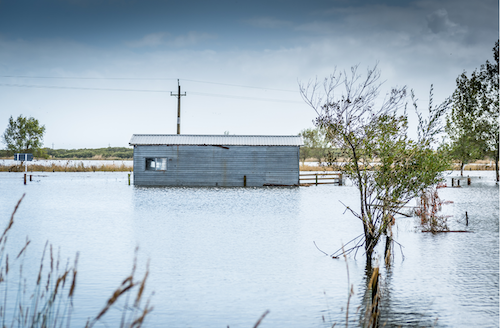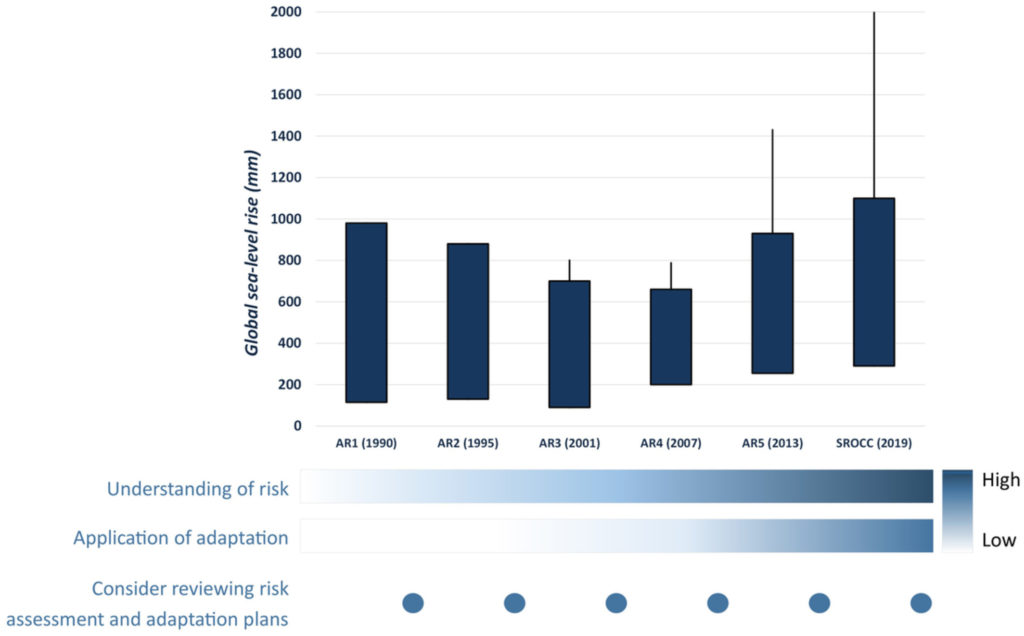
PROTECT paper #9 is published! Read more about “Integrating new sea level scenarios into coastal risk and adaptation assessments: an on-going process“
Here are the main findings:
- The regular release of new and updated sea level rise information needs to be better anticipated and included within coastal risk and adaptation assessments and the process within which they sit.
- New sea level information necessitates review and update based on the new information, but this process should build on and retain useful information from earlier assessments rather than start again, unless this is absolutely necessary.
- An intercomparison of the evolution of the headline projected ranges across all the IPCC reports show an increase from the Fourth and Fifth assessments to the most recent ‘Special Report on the Ocean and Cryosphere in a Changing Climate assessment’.

- Later IPCC reports have begun to highlight the importance of potential high-end sea level response, mainly reflecting uncertainties in the Greenland/Antarctic ice sheet components, and how this might be considered in scenarios.
- New sea level information should be seen as an opportunity to review (i) an assessment’s robustness in the light of new science, and (ii) the utility of proactive adaptation and planning strategies, especially over the more uncertain longer-term.
